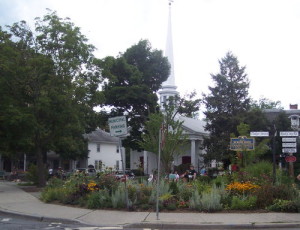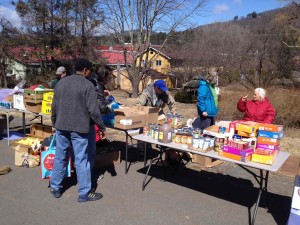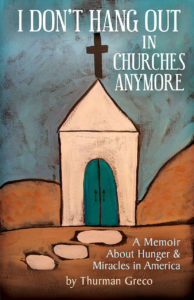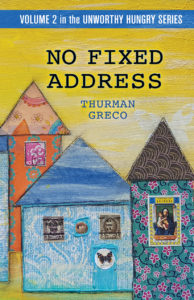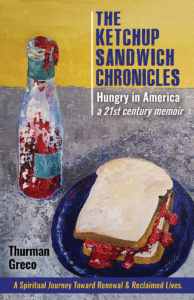5 Important Things You Need to Know About SNAP
“Hunger and income inequality is probably the single biggest issue facing this country.” – Susan Zimet
When you use SNAP, you don’t just get much needed food for your household. When you use SNAP, you create a ripple effect of money for your community. You can use your SNAP card with pride knowing how your purchases will benefit your area.
Here’s how it works: SNAP is federal money. When you use your SNAP card at a local supermarket, you bring it into your community. The grocer uses the money to benefit the local grocery store. This purchase strengthens local businesses.
Are you in a household with senior/disabled members? If so, you may still qualify for SNAP even if you have a higher income. SNAP works for individuals, couples, and families.
Are you paying mandated child support? If so, this money you use to pay child support is not counted toward your income.
You can work and still qualify for SNAP, stretching your food budget every month. When you use SNAP, you more easily afford the nutritious foods you and your family need.
You can shop at a food pantry and still qualify for SNAP.
SNAP can be an important addition to you and your household budget. Apply for this benefit today to help yourself, your household, and your community. How cool is that?
Thanks for reading this blog.
The story is true. The people are real.
Don’t forget to join the email list.
Please refer this article to your preferred social media network and to anyone you know you may benefit from SNAP but is not using it.
Thurman Greco
My Story and the 9 Truths I Discovered
I began my life changing journey fighting hunger on a cool autumn Thursday in Woodstock, New York in 2005 where I volunteered for the first time at the local food pantry.
I was assigned a shift with Marie Duane. I drove over to the Woodstock Reformed Church, parked my car behind the buildling and cautiously walked in. I had never been to the pantry before.
I entered the empty hallway and found the pantry on the right. I walked into the room and there it was: a small space, actually, about 12′ by 16′. Each wall supported a set of metal shelving units. Each unit stood about 6′ high and 3′ deep with 4 shelves. Most of the shelves were empty. A few shelves had some food:
cereal
tuna
soup
peanut butter.
There was a little handwritten note in front of each display:
person: 1 item, family: 1 item.
There may have been other items on shelves but I don’t remember them.
A small table stood in the center of the room. A metal folding chair was placed in front of each window.
We sat in the chairs, Marie and I, and chatted as people trickled in. We discussed the usual: weather, gardening, knitting, decorating the alter at St. Gregory’s Episcopal Church.
“Hi. How are you? Will you please sign your name here?” Each shopper signed in and noted the number of adults, seniors, and children in the household. After signing in, the person walked around the room selecting from the cereal, peanut butter, tuna, and soup. The selected food was placed on the table and bagged to take home, wherever or whatever that was.
On this morning, not blessed with any psychic knowledge, I was totally unaware of experiences waiting for me in the pantry. Never in my wildest thoughts did I envision the hall filled with hungry people, the tiny room packed with fresh produce and jammed with shoppers.
Nor did I for 1 moment ponder the push back I would experience as the number of hungry seeking food grew. Within a few short years, this 2 dozen single homeless men – mostly Woodstock’s colorful characters – had swelled (due to a tanking economy) to over 300 people weekly. This number finally approached 500 people weekly before it was all over.
Now, in the autumn of 2015, our stock market experiences numerous “corrections”. I realize I learned some things over the years which, for me, are ground truths about the pantry.
Feeding the hungry with dignity is the most important thing.
Single homeless men are now far outnumbered by members of the Struggling Class, households of working people holding down 2 and 3 jobs just to pay the rent and buy the gas to get to work.
The 3 most hot button words in the English language are food, sex, and money. These 3 words are concerned with a person’s core beliefs, emotions, and spiritual attitudes. Food and money, or the lack thereof, loom large in pantries.
The sidewalks in our communities and cities have become wards of untreated mentally ill people. In our great nation we don’t hospitalize or otherwise treat many of our mentally ill. Instead, they they are incarcerated.
Some of these untreated mentally ill happen to be homeless. Homeless is not a category of people. It’s just a situation that happens. It can happen to anyone.
The 50+ senior population has many who lack enough $$$ for food and are largely a silent group. The bottom line is this: When our grandparents don’t get enough to eat, they often get sick.
I’m seeing a whole generation of children who have never been inside a grocery store.
Shoppers at our pantry can get a 3-day supply of food weekly. Their job is to make it last 7 days. Many share this food with a pet. Often, the only thing a person has left from a prosperous past is the dog.
The most difficult thing I see in the pantry is a Korean War vet getting food. Something I just can’t understand is how a person who served in a very brutal war, and subsequently spent an adult life working and paying taxes should have to be in a food pantry line in his old age.
Much of the food available to the hungry in food pantries is diverted from its trip to the landfill.
There is absolutely no excuse for anyone in our great nation to go hungry.
Thank you for reading this blog. The story is true. The people are real.
Please refer this article to your preferred social media network. Share this story with friends or relatives who might be interested.
Don’t forget to join the email list.
Thurman Greco
Writers’ Boot Camp Inspiration
I’ve been inspired by the Writers’ Boot Camp experience to knuckle down and finish the reflexology book…AT LAST!
So, I’ll be posting on the hunger/food pantry blog every other week for the next few weeks. I hope you are not inconvenienced by this.
Thank you for your patience and your support.
Thank you for reading this blog.
Please refer this article to your preferred social media network.
Don’t forget to join the email list.
Thurman
http://www.reflexologyforthespirit.com
http://www.goodmorningwoodstock.com
Let’s Celebrate National Farmer’s Week – August 2 to 9
 National Farmers Market Week begins Sunday. If you can, please take a moment this week to thank local farmers for the great food they provide our communities. Thank them also for the support we see at food pantries everywhere.
National Farmers Market Week begins Sunday. If you can, please take a moment this week to thank local farmers for the great food they provide our communities. Thank them also for the support we see at food pantries everywhere.
They do this as a project of the recently begun Farm Stand concept, the brainchild of Jan Whitman and Ron VanWarmer. Jan, Ron, and Carrie Jones Ross worked together to create farm stands in pantries throughout the Hudson Valley where the hungry shop for fresh produce at a price they can afford: free.
I visited 2 Farm Stands in Kingston, New York, recently. One is located at People’s Place and the other at Community Action. What an event Jan, Ron, and Carrie put together! Excited, happy shoppers choose from:
tomatoes
potatoes
onions
squashes
greens
grapes
oranges
apples.
By focusing on feeding the struggling class, one person at a time, the hungry are being fed and the lives of thousands are touched. All Farm Stand food is donated by farmers. No local merchant is losing a sale by not seeing customers in a supermarket line because these people don’t have the income to buy any of the food.
The growing Farm Stand concept offers an opportunity to move the Food Bank of the Hudson Valley into the future at breakneck speed.
In addition to the Farm Stand donations, food pantries throughout our area receive hundreds of thousands of pounds of fresh, nutritious, delicious food each year from local farms. Much of it is organic.
On the individual pantry front, Migliorelli Farm donates fresh produce weekly to our pantry year round. Greenleaf Farm Stand donates produce to volunteers who drop by before the pantry opens every Monday.
Prasida and Francine drive the pantry van to the Regional Food Bank in Latham weekly to pick up fresh produce donated from Hudson Valley Farms.
The Regional Food Bank owns the Patroon Farm which grows organic vegetables. Their crops all go to the food pantries and soup kitchens throughout our area.
The generosity offered by farmers and local pantry volunteers makes pantry distribution a reality. Those who selflessly share their time make our mission a success. Without the dedication and generosity of our farmers, where would be be?
http://www.foodbankofhudsonvalley.org
http://www.regionalfoodbank.new/farm/overview
Thanks for reading this blog.
Please share this article with your preferred social media network.
Don’t forget to join the email list.
Thurman greco
3 Important Things We Can Do To End 50+ Hunger
“Hunger and income inequality is probably the single biggest issue facing this country”. – Susan Zimet
Ending hunger is a huge task…so big it’s scary, even. But, it’s okay to be scary. It’s doable. And, besides that, anything that’s really important is probably a little scary. Right?
HOW CAN THIS HAPPEN?
Hunger in general and 50+ Hunger in particular are buried issues. In other words, unless you’re the one shopping at the pantry, you haven’t got much of a clue. If you’re standing in a grocery line with 5 cotton tops, statistics tell us that 1 of them is struggling for $$$ to get the food s/he needs.
Food insecurity happens with 50+ citizens when the retirement income is insufficient to meet day-to-day needs.
Not all 50+ people are retired. It’s not unheard of to see people visiting the pantry, men mostly, who have been fired from jobs they’ve held for many years. After a worker crosses the line to being 50+, getting another job is pretty impossible. So, the challenges are great. What I saw most of them do is desperately figure out how to get some sort of aid: SSI, disability, that will last until the social security kicks in.
I’VE SEEN MY SHARE OF MEN IN THIS STRUGGLE. Some were successful. Others just finally got seriously ill and died. This seems tragic, I know. But, think about it for a moment. What else are they going to do when the $$$ is gone and there is no chance of any more $$$ coming in?
One such pantry shoppers came into the basement of the Woodstock Reformed Church angry. He was one of the angriest men I saw in the pantry the whole time I worked there. Frightened reality covered his face.
“I’m finished” he said. “They fired me today! I’ll never be able to get another job again. I’m too old!”
I didn’t say a word. He didn’t look or act as if he was going to hurt anyone and I felt he needed to release some of his anger. He didn’t try to punch the walls or the other shoppers or the volunteers. And, since the wait was over an hour, I felt he would quiet down before he finished shopping.
HE WAS CORRECT ABOUT 1 THING. He was probably not ever going to get a real job again. I just hoped his unemployment was going to hold out until he could figure out how to get something more permanent:
SSI
Disability
SNAP
It took him a year to calm down. Every time he came to the pantry, I saw the anger. We all just left him alone. It was all we could do for him.
Time passed.
Now, in 2015, I saw him again – calm, maybe at peace with his situation. He lives in his truck, sort of semi homeless, I suppose. He has places to bathe, etc.
He’s a talented musician, this man. He has found places to play and he is looking okay. What more can we all ask for anyway?
Anyone with income that doesn’t include $$$ for food is, in my book, in crisis..
50+ seniors routinely decide between food and transportation, food and medicine, food and clothing.
WHAT CAN WE DO?
One thing we need to do is understand, really understand, what keeps seniors from getting enough healthy food. The 50+ population is growing, not shrinking. we have a continually increasing number of seniors facing
food insecurity
rising food costs
availability of healthy food
shrinking Government funding.
FOOD PANTRY WORKERS DO WHAT THEY CAN. Volunteers in many cases keep people from dying of hunger on the streets. But pantries are, with 50+ hunger, a small effort. Can people seek more important ways to address the problem? Can we develop some long-term and short-term solutions?
WE NEED TO DO 3 THINGS:
UNDERSTAND WHAT STANDS BETWEEN THE 50+ HUNGRY AND FOOD
EDUCATE THE PUBLIC
HELP THE 50+ POPULATION GET THE FOOD
Educating the public has its own challenges. Food is such a hot button issue in our country. People immediately go into denial. They want to believe that the shoppers in the pantry lines are all wealthy and drive Maseratis and Corvettes.
Of course, this will never be true. I’ve been working in the food pantry industry for 10 years and I’ve seen very few free loaders. And, honestly, the free loaders I met all had mental issues.
The number of people shopping in in food pantries who don’t belong is very small.
The number of people who need to shop in food pantries is large.
The number of 50+ people who need to shop in food pantries but don’t is way too large.
WE NEED TO KEEP THE EDUCATIONAL EFFORT GOING. That’s why I work in a food pantry, write this blog, and speak about hunger at pretty much any place I’m invited.
Helping the 50+ population get the food is a challenge. It’s difficult to learn that you worked all your life, paid your taxes, participated in social security, and now …when you need it…it’s not enough.
What happened to our dream?
Was it ever real?
Did we get bilked?
Were we all just kidding ourselves?
OUR PARENTS AND OUR GRANDPARENTS WORKED TO BUILD A NATION. We worked to continue the American Dream. Now, we find that it doesn’t really exist. For some, the belief is that this dream never did exist. For many, the most important thing is to just not let anyone know how bad things are for them.
Hunger in the 50+ community today is where being gay was prior to 2000.
If you can talk just one 50+ senior into getting SNAP, you will be doing a wonderful thing.
Thank you for reading this blog.
Please refer this article to your preferred social media network.
Don’t forget to join the email list.
Thurman Greco.
Summertime
“What’s happened?” she asked with concern in her voice.
“What do you mean? ” I replied.
“What happened to the people?”
“Oh, that. Well, it’s summer.”
What’s happened is that the faces are often different in the pantry in the summer. When you’re living on the edge, when you’re a member of the Struggling Class, the change of seasons counts for a lot.
People who were too sick to make it to the pantry in cold are now able to make it out. How they manage to make it through the winter is a question for me. These shoppers barely get enough to eat as it is. How do they eat over the winter? Humans are not bears and don’t hibernate. What do these disabled do to survive?
And, yet, we have many in this category.
Some can’t make it to the pantry in the winter because their vehicles aren’t winter worthy. Beyond a certain temperature, the cars just don’t work. Then, as spring rolls around, they manage to get them running again to drive to the pantry during the warmer months.
Making it to the pantry in the winter is really difficult for the homeless. Truthfully, I don’t know how some of these homeless live in the winter. How they keep from freezing to death seems to me to be a miracle.
We lose some shoppers also. In the winter, men visit the pantry regularly because they don’t have work. Then, as the weather gets warmer, they find jobs and can’t come to the pantry because they’re working when the pantry is open.
We always miss these guys because they are good volunteers and really make a contribution to the pantry during the cold months.
One staple which carries everyone through challenges is peanut butter. Peanut butter is important to everyone in the Struggling Class.
It is important because it:
can be eaten right out of the jar.
needs no refrigeration.
has a long shelf life.
is not necessary to have teeth in order to eat it.
does not have to be combined with another food in order to be palatable.
is nutritious.
does not usually come in a container requiring a can opener.
is not necessary to cook it.
The only hitch to this whole wonderful story about peanut butter is that most of the time, there is no peanut butter in the food pantry.
The only time we are able to get peanut butter in our pantry is when we are having a peanut butter drive. It’s been months since we’ve had a decent amount, or any amount, of peanut butter.
Can you help?
There are 2 ways you can come to our rescue:
Our pantry is open Mondays from 2 to 4 in the afternoon. I’m usually there by 10:00 am.
On Tuesday mornings from 9:00 to 10:00 we are in the pantry packing the take out bags.
If you live/work in the area and want to bring some peanut butter to the pantry, we’re happy to receive it then.
If dropping the peanut butter off at the pantry is not convenient, we’ll be happy to accept your donation and purchase the peanut butter for the pantry. Please send the check to: Reservoir Food Pantry, P.O.Box 245, Boiceville, NY 12412.
We thank you in advance for this generosity. Currently, we serve over 150 households each week. Everyone needs peanut butter.
Peace and food for all.
Thurman Greco
Thank you for reading this blog post.
Please share this article with your preferred social media network.
Don’t forget to join the email list.
Grocery shopping is always a problem for the elderly.
I first met her outside the shed at the Reservoir Food Pantry. A recent widow, I heard her comment “I just never knew how hard it was going to be as a widow.” Her husband died just over a year ago and she’s still making her way toward accepting her new reality.
“I never knew it would be so difficult…being alone like this. I’ll never tell my children I come here. I don’t want them to know.”
As she spoke, she wiped an occasional tear while moving through the pantry line with a group of women, all about her own age. They were choosing corn and apples, squashes, greens, onions, potatoes. As the line snaked forward, she turned her attention to the canned goods: beans, soup, fruits, veggies.
Pat hasn’t made it to the food stamp office in Kingston. For one thing, it’s a good half hour down Route 28. For another, she’s afraid:
of the forms,
the humiliation of being unable to survive on her own,
the long wait in a building she may not even be able to find,
finally, she’s afraid of the whole process which she finds frightening.
Her financial situation isn’t so far from all the other older women in the pantry line. Grocery shopping for the elderly is difficult under the best of circumstances. Getting to the grocery store can be challenging for older people – getting around in the parking lot and going up and down the grocery store aisles is no fun anymore. And, then, when they can’t find what they need, they have to maneuver the muddy parking area and the scary entrance ramp at the pantry. And…we haven’t even discussed the packages yet. They’ve got to be gotten home and in the house (wherever and whatever that is).
Finally, getting high quality, affordable food is more and more difficult as the days go by. And, as difficult as it is for Pat, she’s one of the lucky ones. She’s got a working automobile.
Combine the lack of a working automobile, bad weather, not enough $$$ and you’ve got the makings of a disaster for a senior.
I keep telling everyone who’ll listen that seniors should get their SNAP card, a list of nearby pantries, and their first social security check at the same time. So far, nobody has listened. Of course not. Why should they? We’ve all got gray hair.
Seniors struggle with the big 3:
food
housing
medical expenses.
Forget the extras like clothing. As seniors, we get less, pay more, and go without. When I need something new to wear, I go to the boutique of my closet.
Healthcare costs can be devastating, even to a senior with medicare. Once a person comes down with cancer or other expensive disease, the pocketbook empties pretty fast.
There is real pressure to feed the rising tide of hungry people at every pantry. We get questionnaires periodically from different agencies wanting to know how often we run out of food. How does “weekly” sound?
The Big 3 for pantries include:
high unemployment
widespread poverty
deep cuts in social spending programs.
Pantries, for the most part, are
arbitrary,
subjective,
strongly biased
when it comes to deciding who can and cannot receive food. There are simply too many agencies with too many people standing in line for too little food for any food bank or state office to properly oversee and supervise the selection process.
As far as feeding the hungry, we’re not even coming close to filling the need created by the widespread poverty and deep spending cuts. People in food pantry lines are, in a severe winter, choosing between eating and heating.
Our pantry, housed in a shed, an old green house, and the back of a restaurant is a ragtag emergency food movement which is in reality not emergency at all.
Lines and crowds outside our pantry on Monday afternoons can easily convince any onlooker that the good old U S of A has a food problem.
http://www.reservoirfoodpantry.org
Thank you for reading this blog/book.
Please send a comment.
Please share this article with your preferred social media network.
Don’t forget to join the email list.
Peace and food for all.
Thurman
Why I work in a pantry…even after all these years.
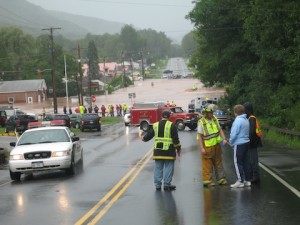
“This is perfect weather for a flood” she said casually. “It’s good to see the county out cleaning the ditches by the roads. We need to be ready.”
As I write this post, my mind travels back in time to the 1st pantry day after both Hurricane Irene and Super Storm Sandy. I managed a pantry in Woodstock, NY then. What pantry days they were! People came in looking for anything and everything they could find. They were upset, scared, coping with loss. Many had lost everything – car, house, job. They didn’t know where to turn.
Sadly, neither did I. As they filed in the pantry room, they asked questions that I couldn’t answer. So…I referred them to Family of Woodstock down the street. I simply didn’t know what else to do.
So, now I fast forward to the present where I manage a pantry in Boiceville, NY. Residents here are still recovering from Irene and Sandy. At this pantry, I see some of the same people I saw in Woodstock. Recovery is slow.
Reservoir Food Pantry volunteers work to assure that quality food is available for the many individuals and families in Ulster County. They struggle with food insecurity, homelessness, and underemployment. About 40% of our clients are transportation challenged and we deliver food to them.
Hunger comes in several categories in our area:
elderly poor
employed poor
ill poor
infant poor
generational poor
persistent poor
resource poor
situational poor
struggling poor
Regularly, without even a second thought, volunteers at our pantry located in the Ashokan Reservoir area of Upstate New York, work hand-in-glove with UlsterCorp volunteers, Rondout Valley Growers’ Association. Together, they make an an ongoing effort to provide enough food for those struggling daily with hunger.
Now, in 2015, area pantries are working to be a cohesive group with food storage and safety procedures known by everyone. We know, even if no one else does, how much the area hungry and homeless need the food. Hunger alleviation cannot be effectively carried out in a vacuum.
Our success depends on long term commitment and collaboration. We need to be able to escalate services when needed. Volunteers in our group are here for the time and effort necessary to fight hunger and homelessness in our area.
www.ulstercorps.org
www.familyofwoodstockinc.org
www.goodmorningwoodstock.com
Thank you for reading this blog.
Please refer this article to your preferred social media network.
I hope you found this helpful. Please leave your comments below and check out our other posts.
Don’t forget to join the email list.
Peace and food for all.
Thurman Greco
“Are you closing?”
 The call came out of the blue. A pantry management person I never, ever hear from called: “Are you closing your pantry? I heard this and I’m not the kind of person to spread gossip, so I’m asking you personally.”
The call came out of the blue. A pantry management person I never, ever hear from called: “Are you closing your pantry? I heard this and I’m not the kind of person to spread gossip, so I’m asking you personally.”
“No. No, the Reservoir Food Pantry is not planning to close” I replied. Actually, I’ve been having people call me for almost a year asking if we’re closing. I always ask everyone who approaches me: ” Who did you hear this from?”
“I don’t remember, Thurman.”
“Well, I sure wish I could get someone to spill the beans because I’d love to call that person up and find out what started this whole rumor.”
If I’ve had this conversation once, I’ve had it a dozen times over the past few months. So, here for all the world to read, is the bald truth. The Reservoir Food Pantry is not closing. Actually, we’re growing like a weed.
Every Monday morning Prasida and Francine go to Latham and return with all the produce they can haul back in our long line van. They, Bob Overton, Garrett O’Dell, and Susanne Traub put it out on tables and serve it to the shoppers. By 4:00, there is usually none left. Fruits, vegetables, pies, cakes, meat, fish, yogurt, eggs, …it’s all gone.
We serve about 100 families every Monday afternoon at 2:00. On Tuesdays and Fridays we deliver food to another approximate 50 home bound households.
We have an annual mailing in which we ask the community to support us financially in our efforts.
We are at the entrances of the Kingston Walmart one weekend every month asking shoppers to help us feed the hungry.
Every other month we are at the entrance to the Boiceville IGA on a Saturday as well.
We recently opened a Capital Building account at the bank.
We are actively involved in disaster preparation activities.
The volunteers of the Reservoir Food Pantry are a group of committed individuals focused on feeding the hungry as a way of celebrating the amazing abundance which is available in our country. Only in the good old U S of A could there be this much food available…just for bringing to pantries.
We are:
your tax dollars at work.
an environmental effort as we intercept food bound for the landfill and bring it to the pantry for distribution.
working together to feed the hungry.
looking for a larger space that is located above the flood plain.
extremely grateful for the opportunity we have to feed the hungry in the Ashokan Reservoir area.
It is an honor and a pleasure for us to be in Boiceville in the little red shed behind Robert’s Auction.
Thanks for reading this blog.
Please refer this article to your preferred social media network.
I hope you found this article helpful. Please leave your comments below and check out other blog posts.
www.reflexologyforthespirit.com
www.goodmorningwoodstock.com
www.sugarsecurity.com
my.Benefits.ny.gov
Don’t forget to join the email list.
Peace and food for all.
Thurman Greco


